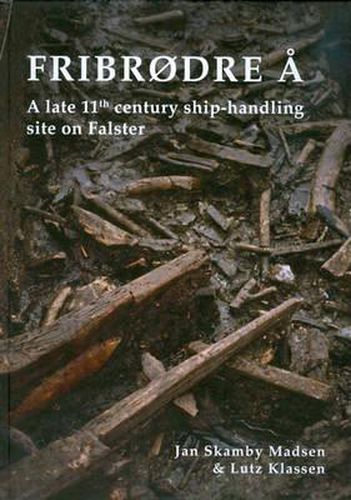Readings Newsletter
Become a Readings Member to make your shopping experience even easier.
Sign in or sign up for free!
You’re not far away from qualifying for FREE standard shipping within Australia
You’ve qualified for FREE standard shipping within Australia
The cart is loading…






The find of numerous ship parts along the river Fribrodre A on the island of Falster has led to the discovery of a hitherto unknown type of harbour from Viking and Middle Age Denmark. In the boggy grounds along the river, archaeologists found thick rubbish layers containing ship parts, tools, and discarded wood from the 11th-12th century. This was probably not a shipyard as such but rather a dock offering more or less comprehensive repairs and the occasional building of a new ship. The ship parts are scattered without any obvious order in the old riverbed, where the water has moved the wood around. They are worn and destroyed fragments, almost all showing signs of having been removed by force. Floor timbers and beam knees are split lengthwise through the rivet holes so that they could be removed from planks and beams during the repairs made necessary by wear and tear, by battles, or by other rough handling. To all appearances, new ships were also built here. Unused treenails and large amounts of wood chips are scattered among the ship parts.
$9.00 standard shipping within Australia
FREE standard shipping within Australia for orders over $100.00
Express & International shipping calculated at checkout
The find of numerous ship parts along the river Fribrodre A on the island of Falster has led to the discovery of a hitherto unknown type of harbour from Viking and Middle Age Denmark. In the boggy grounds along the river, archaeologists found thick rubbish layers containing ship parts, tools, and discarded wood from the 11th-12th century. This was probably not a shipyard as such but rather a dock offering more or less comprehensive repairs and the occasional building of a new ship. The ship parts are scattered without any obvious order in the old riverbed, where the water has moved the wood around. They are worn and destroyed fragments, almost all showing signs of having been removed by force. Floor timbers and beam knees are split lengthwise through the rivet holes so that they could be removed from planks and beams during the repairs made necessary by wear and tear, by battles, or by other rough handling. To all appearances, new ships were also built here. Unused treenails and large amounts of wood chips are scattered among the ship parts.